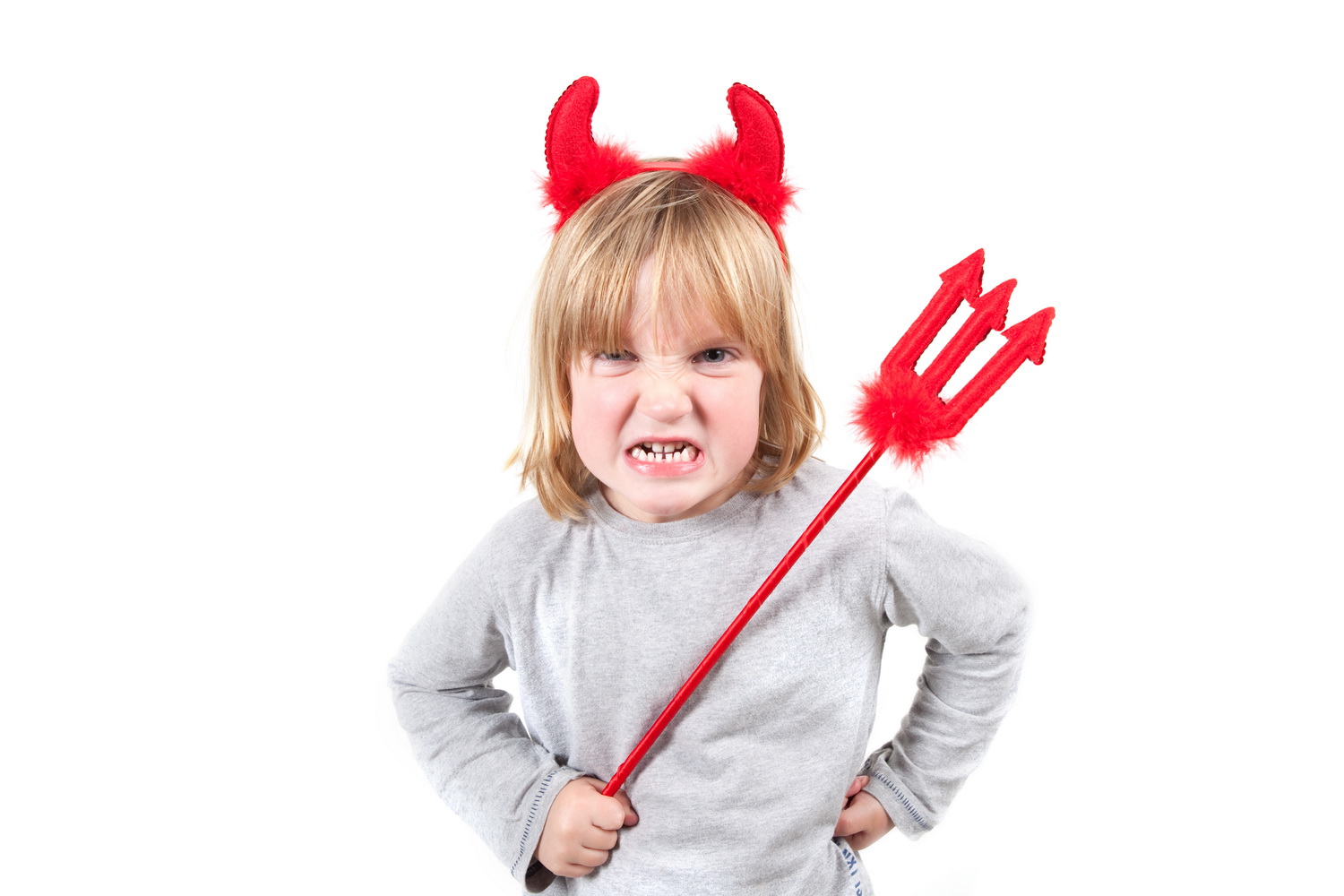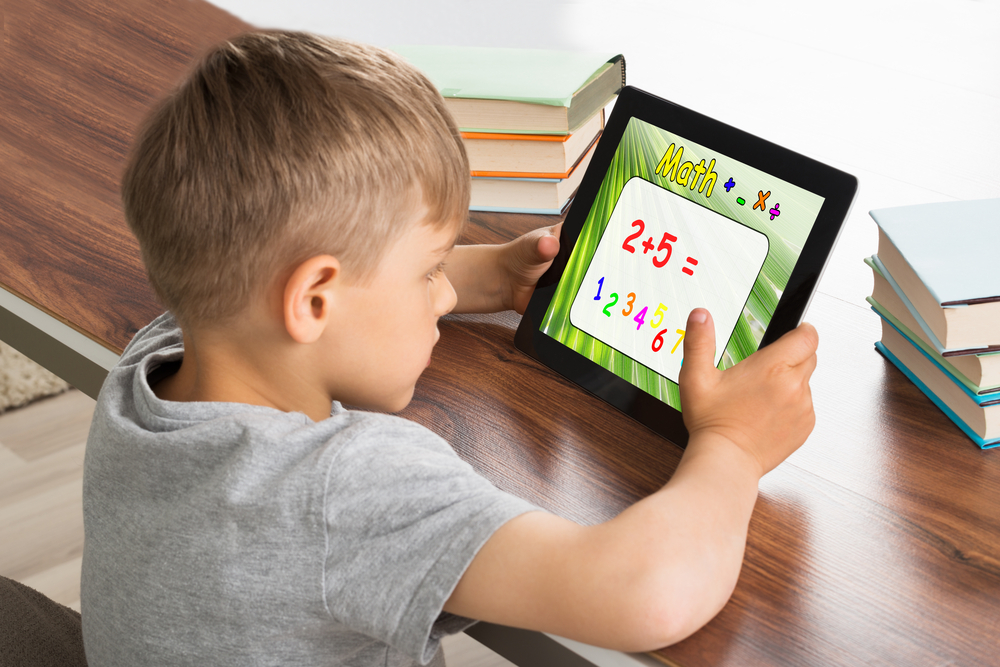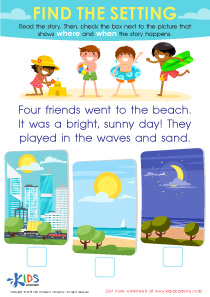Comparing lengths Easy Worksheets for Ages 3-7
6 filtered results
-
From - To
Discover our "Comparing Lengths Easy Worksheets for Ages 3-7," designed to make learning fun and engaging for your little ones! These printable worksheets focus on helping children understand the concept of length through exciting activities and colorful illustrations. Suitable for preschool and early elementary school students, our resources enable young learners to compare and measure different objects effectively. Each worksheet is crafted to encourage hands-on exploration and critical thinking, fostering essential early math skills. Ideal for parents and educators, these worksheets provide a wonderful opportunity to introduce children to measurement concepts in a supportive and enjoyable way. Start exploring today!
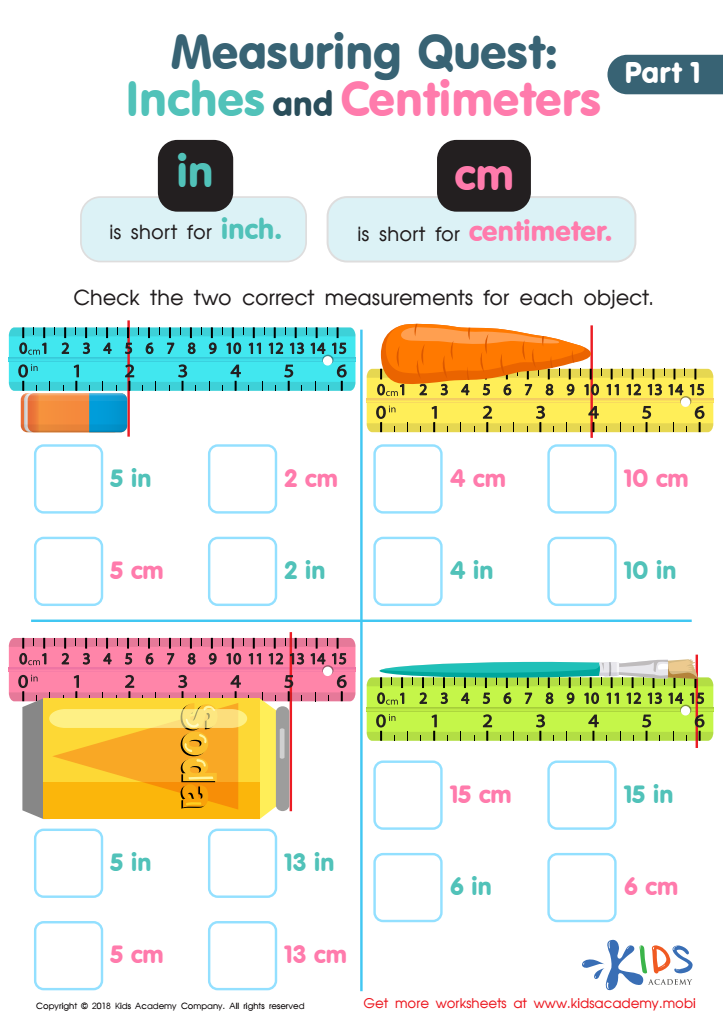

Measuring Quest: Inches and Centimeters Worksheet
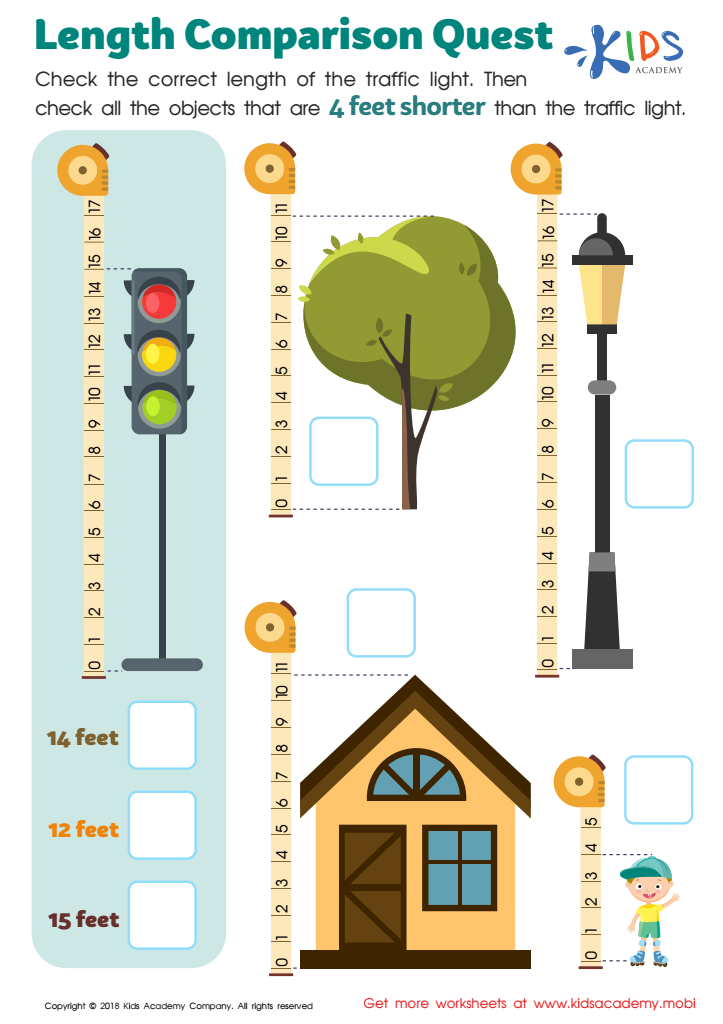

Length Comparison Quest Worksheet
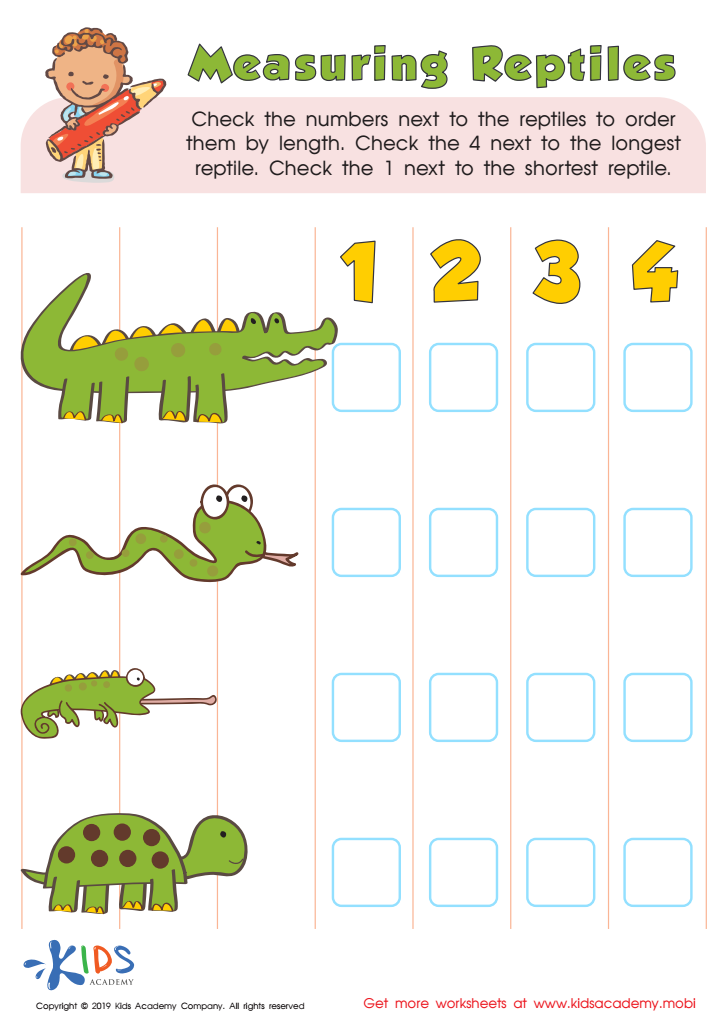

Measuring Reptiles Worksheet


Measuring the Length of Plants Worksheet


Measuring with Blocks Worksheet


Let's Measure Animals! Worksheet
Teaching children to compare lengths is an essential competency that lays the foundation for their cognitive development. For children aged 3-7, understanding length comparison goes beyond simple measurement; it fosters critical thinking and problem-solving skills.
When parents or teachers engage young learners in activities involving length comparisons, they encourage observational skills as children begin to notice differences in size and learn vocabulary associated with measurements, like “longer,” “shorter,” “taller,” or “smaller.” This hands-on approach cements an early numerical understanding that prepares them for more complex mathematical concepts later in their education.
Moreover, these engaging activities promote spatial awareness, which is crucial for geometry and everyday tasks. By recognizing and comparing lengths, children also enhance their fine motor skills through measuring and manipulating objects. This blend of physical, cognitive, and linguistic development supports a well-rounded approach to learning.
Lastly, involving children in these comparisons nurtures their ability to ask questions, make predictions, and draw conclusions—all fundamental skills for lifelong learning. Therefore, it's essential for parents and teachers to prioritize comparisons of lengths, ensuring that children gain confidence and foundational skills that will support their academic journey.
 Assign to My Students
Assign to My Students







